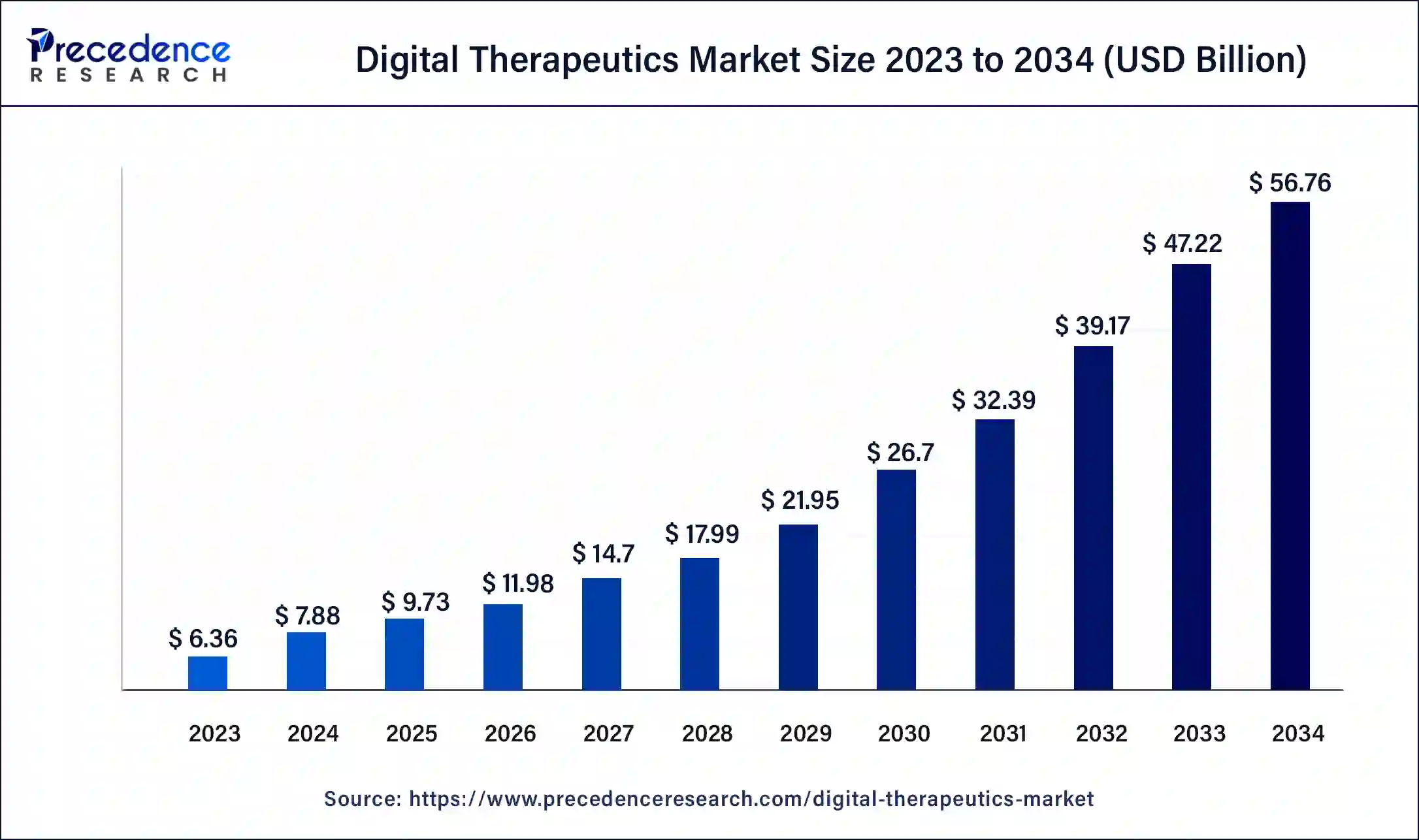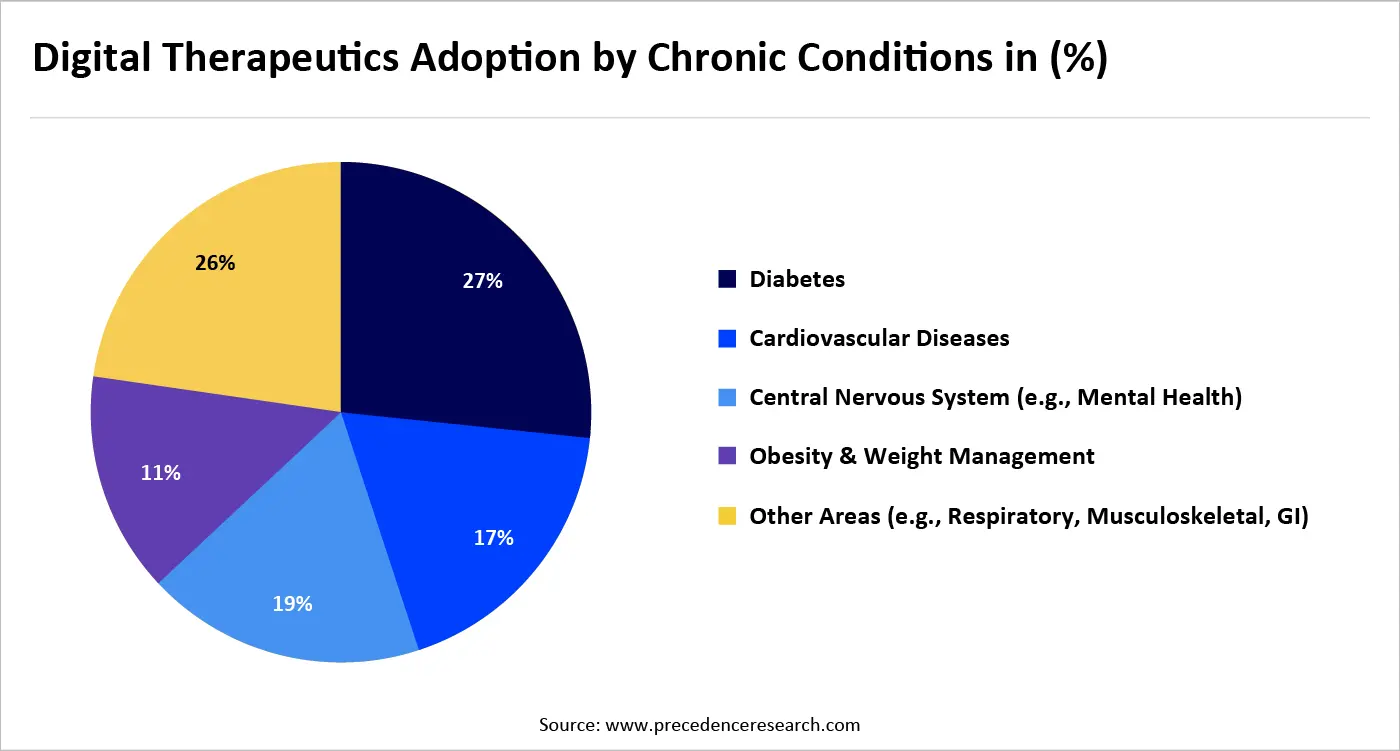All over the world, the escalating burden of chronic disease presents a significant challenge to modern healthcare systems. Most of these lifelong conditions are irreversible and typically require continuous medication along with substantial behavioral and lifestyle adjustments for management. However, many patients struggle profoundly with adhering to prescribed regimens and making necessary changes. Physicians often lack the tools to effectively monitor patient compliance, leading to suboptimal outcomes and higher population-level disease burdens. Digital therapeutics, emerging at this pivotal moment, offer promising solutions by enabling personalized, real-time monitoring and support to address these challenges. By enhancing adherence and optimizing treatment strategies, digital therapeutics transform the management of chronic conditions, creating opportunities for more effective healthcare delivery.
These pressing challenges have created a critical need for comprehensive, digitally-enabled disease management solutions. The response from the digital health sector has been robust: global digital health funding soared to $57.2 billion in 2021, a 79 % increase over the previous year. Within this landscape, a powerful synergy is emerging between agile digital-native start-ups and established healthcare incumbents. Both entities are crucial players in developing and scaling pioneering digital therapeutics (DTx) programs.
The rising burden of chronic diseases underscores the urgent need for innovative management solutions. Digital therapeutics (DTx) are increasingly seen as a key component in addressing this challenge. According to the World Health Organization, noncommunicable diseases (NCDs) account for approximately 74% of all deaths globally, highlighting the critical demand for scalable management strategies. A holistic approach to managing chronic conditions is essential, integrating medication, monitoring, and behavioral modifications to enhance care delivery and patient outcomes efficiently.
Digital Therapeutics: Rapid Market Expansion Fueled by Chronic Disease Surge and Digital-First Care Models
According to Precedence Research, the global digital therapeutics market size is valued at USD 9.73 billion in 2025 and is projected to reach around USD 56.76 billion by 2034, growing at a CAGR of 21.65%. This growth is driven by the rising chronic disease burden, expanding reimbursement pathways, and rapid adoption of clinically validated digital care platforms.

The complementary strengths of start-ups and incumbents are essential for success in this new health order: Start-ups provide the agility, innovation, and user-centric design necessary to build engaging, effective DTx solutions that drive behavioral change. At the same time, incumbents offer the clinical validation, regulatory expertise, established distribution channels, and payer relationships needed to scale these solutions rapidly and ensure broad market adoption and reimbursement.
By teaming up, these seemingly disparate entities are closing the gap between patient needs and current healthcare capabilities, ensuring that pioneering digital therapeutics can be built, validated, and scaled effectively to tackle the global burden of chronic conditions.
In 2024, Biofourmis partnered with various healthcare systems to integrate its AI-powered analytics and continuous monitoring platform into standard care for patients with certain chronic conditions, demonstrating a viable approach to reducing hospital readmissions and emergency department visits.
In 2019, the startup Pear Therapeutics collaborated with a pharmaceutical incumbent to commercially launch their FDA-approved prescription digital therapeutics for the treatment of certain health conditions, leveraging the incumbent's established market access channels.
Digital therapeutics can play an important role in chronic disease management. The burden of chronic diseases has been increasing globally and is expected to continue. Chronic, noncommunicable diseases, such as cardiovascular disease, cancer, diabetes, and respiratory disease accounted for 75 % of all non-pandemic-related deaths globally in 2021. Experts indicate the world is currently off track to meet the goal of reducing premature mortality from NCDs by one-third by 2030, driven by factors like population growth and aging.
Ineffective management of chronic diseases is largely undermined by subpar monitoring of and adherence to prescribed medications and lifestyle modifications. This challenge is particularly pronounced among patients with type 2 diabetes, where compliance rates hover between a suboptimal 69 and 79 %. Chronic conditions need comprehensive management that goes beyond medication alone, requiring regular monitoring and significant behavioral changes. Hence, healthcare providers need better end-to-end solutions that proactively and comprehensively monitor patient health, as well as encourage sustainable behavioral changes to improve adherence to prescribed medications, diet, and lifestyles.
Digital technologies and digital therapeutics (DTx) are playing a crucial role in tackling these challenges and improving disease management. The potential for DTx to have a big impact is evidenced by the rapid growth in the market. A growing body of evidence indicates that these digital interventions work effectively, with numerous studies demonstrating improved outcomes across various chronic diseases. Research has shown that digital solutions for disease management can drive better outcomes for patients living with chronic diseases. Examples include the following:
Strong digital therapeutics solutions incorporate a set of key elements designed to maximize patient engagement, clinical effectiveness, and economic value.
Established healthcare entities can flourish in the burgeoning digital therapeutics landscape by leveraging their existing clinical credibility and deep institutional knowledge. Incumbents can adeptly navigate this evolution by architecting cohesive, evidence-based solutions that harmonize with established clinical workflows. The core strategy mandates a shift from product-centric thinking to a platform-based ecosystem, allowing for the seamless integration of digital health solutions within existing care pathways and electronic health records. This approach can turn existing infrastructure into an advantage, creating robust and reliable solutions that resonate with the medical community's demand for validated efficacy.
A critical determinant of success for these traditional organizations hinges upon their ability to demonstrate value and effectiveness. Unlike nimble startups, incumbents possess the infrastructure and experience to conduct thorough evaluations and generate the requisite real-world evidence. By prioritizing solutions that secure strong endorsements, incumbents can establish a standard for trustworthiness. This strategic focus helps ensure that their digital health offerings are perceived as legitimate medical interventions, thereby cultivating provider confidence and patient adherence in a crowded market.
Furthermore, leveraging established distribution channels and payer relationships offers incumbents an unparalleled opportunity for market penetration and scale. Instead of starting from scratch for market access, these organizations can integrate digital health products into existing relationships. This leveraging of incumbent infrastructure can reduce the friction of market entry and accelerate adoption. By integrating digital health products into existing value-based care agreements, they can present a clear, quantifiable impact to key stakeholders, solidifying their role as essential partners.
Ultimately, thriving in the digital health arena demands a cultural and operational evolution within incumbent organizations. The successful entity will foster innovation while maintaining its commitment to rigor and quality. This requires cultivating a symbiotic relationship between existing subject matter experts and new-age digital talent, ensuring that the digital health solutions are both medically informed and digitally intuitive, reinforcing strengths in redefining healthcare delivery.
|
Company/Product |
Chronic Health Condition |
Product Offering/Key Features |
|
Akili Interactive / EndeavorRx |
ADHD |
Gamified cognitive therapy delivered via a video game; FDA-cleared. |
|
Virta Health |
Type 2 Diabetes |
Personalized nutritional therapy, health coaching, and continuous monitoring. |
|
Hinge Health |
Chronic Pain / MSK |
Virtual physical therapy, 1:1 coaching, and motion sensor technology. |
|
Click Therapeutics |
Migraine, Depression |
Software as a medical treatment (SaMT), app-based, evidence-based therapy. |
|
Freespira |
Panic Attacks / PTSD |
Sensor and app system for breathing regulation and physiological feedback. |
|
Kaiku Health |
Oncology |
AI-powered platform for symptom tracking, data collection, and alerts for care teams. |
|
Omada Health |
Diabetes, HTN, MSK |
Personalized coaching, connected devices (scales, BP monitors), and education. |
|
Twin Health |
Metabolic Health |
Digital Twin tech; AI-driven personalized recommendations for reversing conditions. |
|
Corrie Health / Johns Hopkins |
Post-AMI Care |
An app with connected devices for continuous monitoring, education, and team connection. |



Aditi, Vice President at Precedence Research, brings over 15 years of expertise at the intersection of technology, innovation, and strategic market intelligence. A visionary leader, she excels in transforming complex data into actionable insights that empower businesses to thrive in dynamic markets. Her leadership combines analytical precision with forward-thinking strategy, driving measurable growth, competitive advantage, and lasting impact across industries.

Aman Singh with over 13 years of progressive expertise at the intersection of technology, innovation, and strategic market intelligence, Aman Singh stands as a leading authority in global research and consulting. Renowned for his ability to decode complex technological transformations, he provides forward-looking insights that drive strategic decision-making. At Precedence Research, Aman leads a global team of analysts, fostering a culture of research excellence, analytical precision, and visionary thinking.

Piyush Pawar brings over a decade of experience as Senior Manager, Sales & Business Growth, acting as the essential liaison between clients and our research authors. He translates sophisticated insights into practical strategies, ensuring client objectives are met with precision. Piyush’s expertise in market dynamics, relationship management, and strategic execution enables organizations to leverage intelligence effectively, achieving operational excellence, innovation, and sustained growth.

All over the world, the escalating burden of chronic disease presents a significant challenge to modern healthcare syste...
19 Nov 2025
Popular commitments among diverse life companies are to step into the massive venture capital market to strengthen their...
18 Nov 2025
Viral vector gene therapies are gaining traction, with the rise in genetic and rare disorders, recent FDA approvals, and...
14 Nov 2025